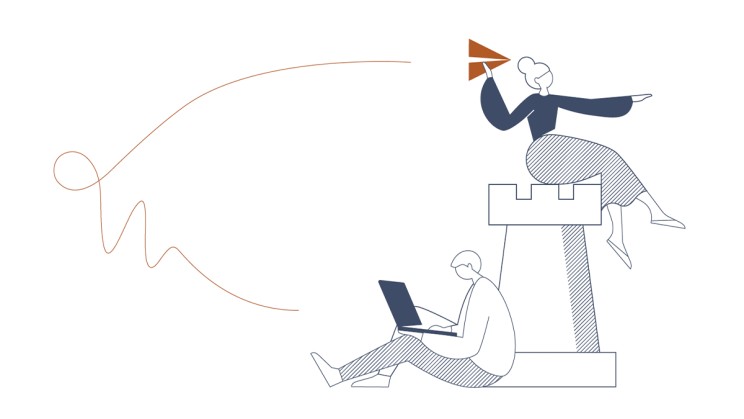In this third part of the synopsis of the report, M&BD Consulting takes a look at human resources and the quest for diversity and talent.
The luxury watchmaking industry is not immune to human resources challenges. Employing over 65,000 people in 2023 (CPIH, 2023), the industry is currently facing two major issues: a lack of diversity and a shortage of talents.
Diversity and inclusion: is the watchmaking industry lagging behind?
The luxury watchmaking sector is often described as traditional and conservative, particularly in terms of recruitment and human resources management. Indeed, the sector faces a lack of representativeness, with leadership positions predominantly held by men not reflecting today’s social diversity. This applies, for example, to the position of women within the industry. Although the situation has evolved considerably as they now represent 43% of the sector's total workforce (CPIH, 2023), access to leadership positions remains challenging for them. Indeed, around 19% of management positions are held by women (CPIH, 2023).
This lack of diversity could be detrimental to industry players. Various studies have shown that promoting diversity and inclusion can increase employee engagement, foster innovation, and improve company profitability.
A century-long tradition
The lack of diversity also affects recruitment and job allocation within the sector. Mostly composed of SMEs based in French-speaking Switzerland, the luxury watchmaking industry likes to recruit within the sector. In fact, having worked in other industries can even be a disadvantage for some candidates. As a result, there is little turnover within the talent pool, and it is often individuals from the sector who take on leadership roles. This can deprive companies of new perspective, innovation and inspiration that might be brought by profiles with careers in different industries.
A cyclical labour shortage
Growth and increased demand inevitably lead to new recruitment needs, especially following a period of workforce reduction such as the COVID pandemic. The industry will need to fill around 4,000 additional positions by 2026, including nearly 1,500 new jobs, in addition to the replacement of almost 2,500 retirements (CPIH, 2022).
Today, watchmaking professions struggle to attract individuals, particularly young people and Swiss nationals. The compensation conditions for certain positions do not always align with expectations, and the geographical location of companies sometimes requires significant commutes.
And this does not only apply to manufacturing jobs. It has become difficult to find and retain competent sales staff who understand the technical aspects of various models or brands and can provide the highest quality customer experience.

Supply chain: balancing control and agility
The watchmaking industry is highly dependent on economic cycles. Indeed, its activity, revenues, and profits tend to fluctuate according to broader economic cycles. The supply chain is therefore directly impacted by macro-economic phenomena linked to raw materials and human resources. Pandemics, geopolitical conflicts, resource depletion and global warming - the watchmaking supply chain has been severely tested in recent years. However, this does not seem to be dampening the development ambitions of watch companies.
A supply chain under pressure
On one hand, sanctions against Russia have compelled watchmaking companies which sourced gold, precious metals and diamonds from that country to look for new suppliers. On the other hand, the increase in energy prices, projected to rise by an average of 18% in 2024 according to estimates (Federal Electricity Commission, 2023), along with higher labour costs and raw material prices significantly impact brands, suppliers, and subcontractors.
As a result, some manufacturers are passing the increased costs onto the price of their timepieces and are experiencing significant production delays. The rising prices and the increasing waiting times to obtain certain watch models could, in turn, affect customer demand.
Increasing production capacity
Nevertheless, the supply chain challenges do not seem to discourage brands. Many watchmaking companies, and especially large groups, are increasing or planning to drastically increase their production capacity in Switzerland. Rolex's plans for a new factory in Bulle, Audemars Piguet's expansions in Le Locle, Meyrin and Le Brassus, and Greubel Forsey's expansion in Le Crêt-du-Locle are all evidence of these growing ambitions.
Trend towards market verticalization
To mitigate the instability of procurement, an increasing number of players with the resources to do so are integrating some of their suppliers and subcontractors or acquiring shares in their capital. The market structure has thus changed in recent years, with the disappearance of many independent suppliers and their absorption by large groups. And while this has benefited several players, a significant number of brands producing smaller volumes struggle to secure deliveries, particularly at times when supply is shrinking while demand is rising. This trend also reflects brands' desire to regain control over their supply chain. This enables them to better manage lead times and inventories, and to quantify, report and improve their real environmental and ethical footprint.
Read the full study
In our comprehensive study, we address many other themes such as the industry's position on the challenges of certification, security, and digitalization, the identification of different categories of buyers, the expectations and opinions of over 400 watch purchasers, the results of a “mystery shopper” tour in nearly 30 mono-brand and multi-brand boutiques in Geneva, and the latest key market figures.
Read Part One
Read Part Two
Discover the full Luxury Watchmaking Study, and for more info contact: info@mbdconsulting.ch






